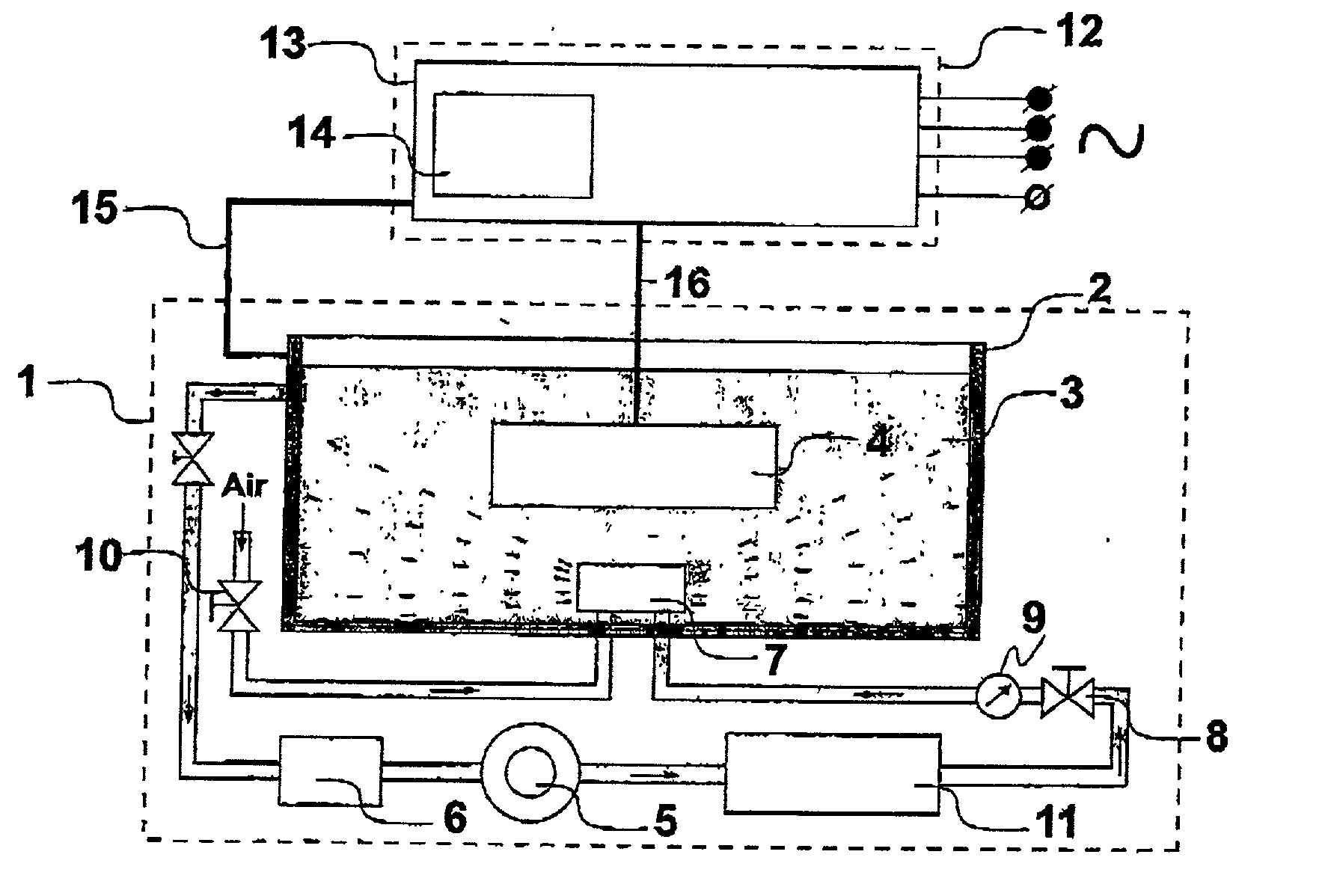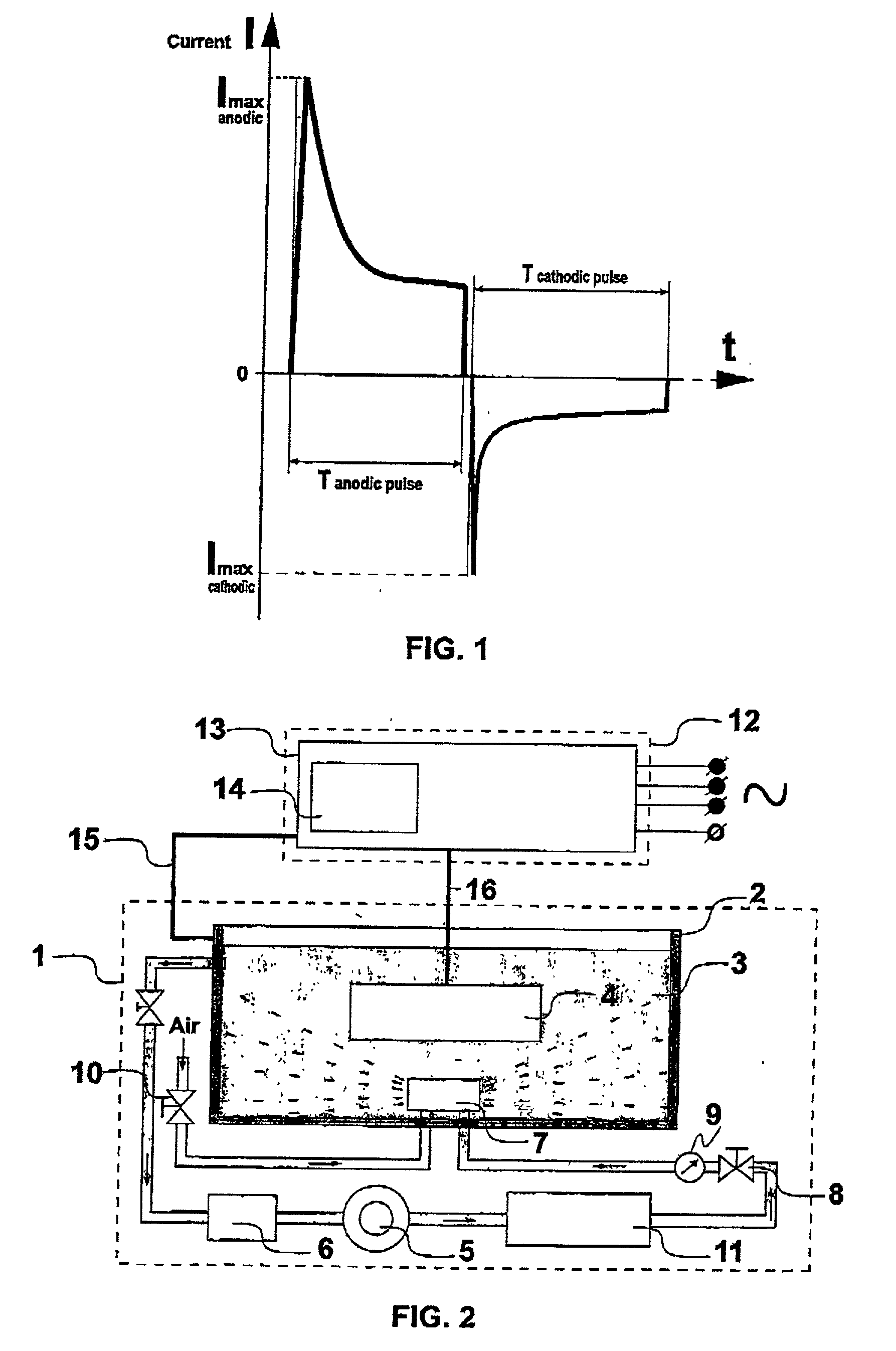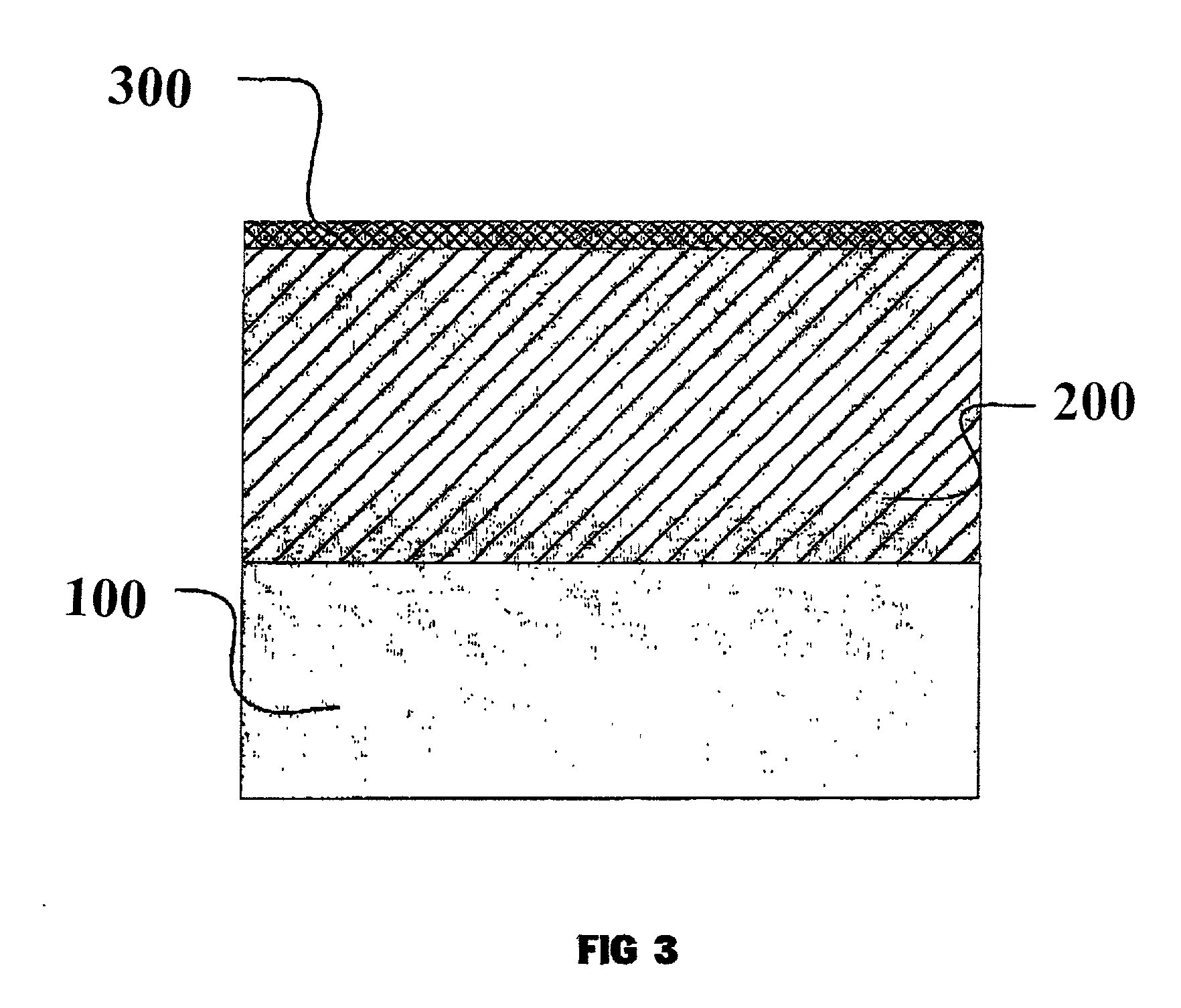Process and device for forming ceramic coatings on metals and alloys, and coatings produced by this process
a technology of ceramic coatings and ceramic coatings, which is applied in the direction of electrolytic coatings, surface reaction electrolytic coatings, electrolytic coatings, etc., can solve the problems of difficult to remove defective layers, large external porous layer of low microhardness, and high cost, and achieve high physico-mechanical properties, low roughness, and high uniformity of thickness
- Summary
- Abstract
- Description
- Claims
- Application Information
AI Technical Summary
Benefits of technology
Problems solved by technology
Method used
Image
Examples
example 2
[0084] A specimen of magnesium alloy AZ91 was oxidised for two minutes in a phosphate-aluminate electrolyte to which 2 g / l of ultra-disperse Al.sub.2O.sub.3 powder with particle size 0.21 / 4 m was added. The temperature of the electrolyte was 25.degree. C., pH 12.5. Bipolar alternating electrical pulses of frequency 10,000 Hz were supplied to the bath in turn. The current density was 10A / dm.sup.2 and the final voltage (amplitude) was: anode 520V, cathode 240V. Acoustic vibrations were generated in the bath using an aerohydrodynamic generator. The pressure of the electrolyte at the input to the generator was 4.8 bars. The coating obtained was dense, of a white colour, overall thickness 20.+-.11 / 4 m, including an external porous layer of thickness 21 / 4 m. The roughness of the oxidised surface was Ra 0.81 / 4 m, the microhardness of the coating was 600 HV, and the porosity of the functional layer was 6%.
example 3
[0085] A specimen of titanium alloy Ti Al6 V4 was oxidised for seven minutes in a phosphate-borate electrolyte to which 2 g / l of ultra-disperse Al.sub.2O.sub.3 with particle size 0.21 / 4 m was added. The temperature of the electrolyte was 20.degree. C., pH 9. Bipolar alternating electrical pulses of frequency 1,000 Hz were supplied to the bath. The current density was 60A / dm.sup.2 and the final voltage (amplitude) was: anode 500V, cathode 180V. Acoustic vibrations were generated in the bath using an aerohydrodynamic generator. The pressure of the electrolyte at the input to the generator was 4.0 bars. The coating obtained was dense, of a bluish-grey colour, overall thickness 15.+-.11 / 4 m, including an external porous layer of thickness 21 / 4 m. The roughness of the oxidised surface was Ra 0.71 / 4 m, the microhardness of the coating was 750 HV, and the porosity of the functional layer was 2%.
example 4
[0086] A specimen of AlBemet alloy, containing 38% aluminium and 62% beryllium, was oxidised for 20 minutes in a phosphate-silicate electrolyte, pH 9, at temperature 30.degree. C. Bipolar electrical pulses of frequency 3,000 Hz were supplied to the bath. The current density was 35A / dm.sup.2 and the final voltage (amplitude) was: anode 850V, cathode 350V. Acoustic vibrations were generated in the bath using an aerohydrodynamic generator. The pressure of the electrolyte at the input to the generator was 4.5 bars. The coating obtained was dense, of a light grey colour, overall thickness 65.+-.21 / 4 m, including an external porous layer of thickness 81 / 4 m. The roughness of the oxidised surface was Ra 1.21 / 4 m, the microhardness of the coating was 900 HV, and the porosity of the functional layer was 5%.
PUM
| Property | Measurement | Unit |
|---|---|---|
| current density | aaaaa | aaaaa |
| current density | aaaaa | aaaaa |
| frequency | aaaaa | aaaaa |
Abstract
Description
Claims
Application Information
 Login to View More
Login to View More - R&D
- Intellectual Property
- Life Sciences
- Materials
- Tech Scout
- Unparalleled Data Quality
- Higher Quality Content
- 60% Fewer Hallucinations
Browse by: Latest US Patents, China's latest patents, Technical Efficacy Thesaurus, Application Domain, Technology Topic, Popular Technical Reports.
© 2025 PatSnap. All rights reserved.Legal|Privacy policy|Modern Slavery Act Transparency Statement|Sitemap|About US| Contact US: help@patsnap.com



